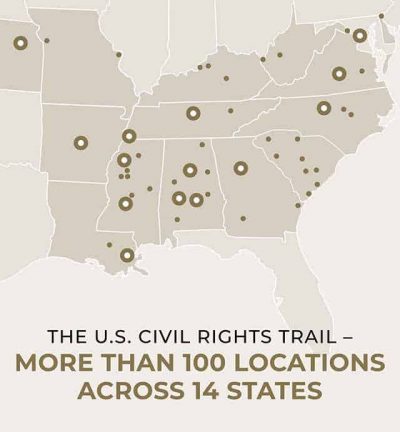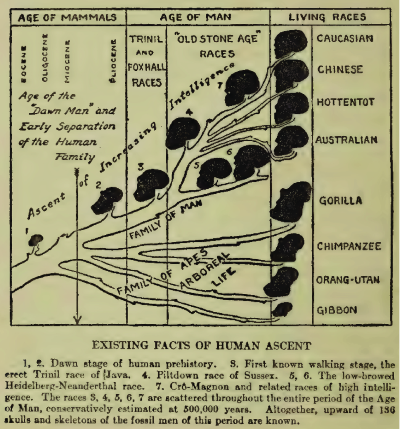
The South shall rise again. What can dysfunctional New York learn from the South on Civil Rights tourism?
By coincidence just prior to the awarding of the grants for 2017, a problem with the Regional Economic Development Council (REDC) funding process was exposed in an article in the Travel Section of the Sunday New York Times (12/3/17). The problem directly relates to the shortcomings of the Empire State Development on precisely those two areas near and dear to the history community: funding and history tourism. The article is entitled “New Civil Rights Trails in Both South and North.” It describes the process whereby representatives from southern state tourism departments met two years ago at Georgia State University to begin the creation of what is called the nation’s first civil rights trail.
As part of that process, Lee Sentell, the Alabama state tourism director, noted that while many civil rights sites were thriving they were not connected to each other.
“No one had even done an inventory of civil rights landmarks. They saw themselves as one-offs and didn’t realize they were part of a network.”
If this sounds like exactly what the Underground Railroad sites in New York are going through today, it is because it is. Of course, the same could be said for American Revolution sites in the state, or War of 1812 sites, the Dutch sites, or the immigration sites, or the sites related to any of the themes in the I LoveNY Path through History project.
Faced with this problem of the lack of connectivity, these southern tourist directors then decided to do something about the situation. They collaboratively and cooperatively acted together to promote cultural heritage tourism in the area of civil rights [did we do that?].
1. They drew on research experts at the university [did we do that?].
2. They created a map linking the sites they researched including directions of how to get from one site to another [did we do that?].
3. They planned to officially launch the US Civil Rights Trail on January 1, the anniversary of the signing of the Emancipation Proclamation by Abraham Lincoln [and this in in the Confederacy! Did we publicly launch any individual paths through history?].
Four weeks later the launch date arrived and the trail is now up and running. The southern states chose the motto:
What happened here changed the world.
4. The website will contain explanations of the importance of each site and feature interviews with relevant people to those sites [did we do that?].
5. The website will explain the connections as one site affects another [imagine knowing how one War of 1812 site relates to another!].
This website allows you to explore the destinations important to the Civil Rights Movement, as well as plan your journey to cities along the trail. On this site, you’ll find places to see and things to do at each destination. Plus, you’ll find in-depth explorations crafted to allow you to experience the destination or event in a more comprehensive way. Discover the trail. Discover the fight for civil rights. And make sure the true stories that changed history are never lost.
Some of these details resemble what the Path through History site does. But see how much more was accomplished in the grouping of sites such as those relating to Martin Luther King, Jr. or Emmett Till. See how the more detailed text provides a more enriching experience. The website is still new and naturally is experiencing growing pains but it is a conceptually more advanced model than New York chose to implement. One might wonder how is it that tourist people were able to develop a more meaningful website than one would expect from tourist experts.
The answer is quite simple. Contributing to this process was the cultural heritage consultant for the state department of economic development [we have marketing consultants but have you ever heard of a cultural heritage consultant or staff person in I LoveNY or the REDC? For a recent article on state spending of ads and to ad firms see $354 Million: How Much NY Spent on Tourism, Business Ads].
In other words, the tourist departments in the south realized that to develop a history-based website, they should consult with experts in history and not just spend money on marketing and advertising companies or erecting signs.
The NYT article did mention Black Heritage Tours in New York. It began operations in 2016. I met founder its Jennifer Tosch once at a presentation through a Dutch consulate program. Her Hudson Valley trip focuses on the Dutch-African experience. There was an I LoveNY familiarization tour for it. According to the website for 2018 there is a two-day tour Feb. 10-11. A full itinerary is not provided and the description of this February program is somewhat questionable:
Experience New York’s Fall Foliage starting in Harlem we’ll travel upstate through the Hudson River Valley to witness the brilliant transformation of the autumn leaves.
I suspect the description from a fall tour in 2017 was carried forward.
Imagine if New York was serious about wanting to promote its story in the Underground Railroad, what would it do? There is a grassroots effort with people like Judy Wellman, an annual conference in the Capital Region led by Paul and Mary Liz Stewart, and cultural heritage tour initiated by Lori Solomon of Akiba Travel. The next Underground Railroad conference will be March 8-10 in Albany but I don’t think tourism is part of the program.
This April will be the two-year anniversary of my post
The Underground Railroad in New York State: Black Lives Still Don’t Matter
The post examined the Freedom Trail established 1997, its defunct commission, and the various weird website links which have cropped up over the years. I ended in my usual delicate and tactful way that has endeared me to government officials:
There is more that could be written about the New York State Freedom Trail/Underground Railroad Heritage trail with its defunct commission, no staff, inadequate websites, and the lack of support for conferences, public forums, and teacher programs [as required by its formation] but the point should be clear. Unfunded, dysfunctional, silo organized history projects are standard operating procedure in New York State. Although black lives don’t matter in New York State history it’s not because the State is racist, it is because the State’s ineptitude occurs on an equal opportunity basis [i.e., all the themes identified in the Path through History].
So what has changed in the nearly two years since then? How come the South can get its act together on civil rights tourism and New York State can’t on any history theme? Perhaps our Governor who wants to be President should travel to the South to learn how state governments can promote cultural heritage tourism and apply that model not just in civil rights but in all the themes of the Path through History and in sites both upstate and downstate. After all, what happened here changed the world.




